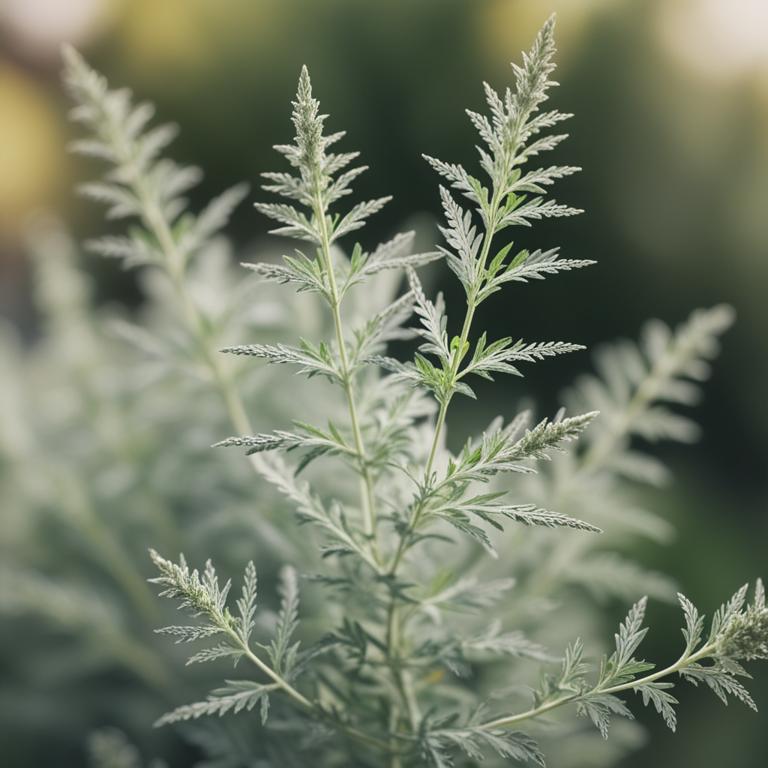13 Artemisia Annua Best Therapeutic Properties

1. Anti-Inflammatory
Artemisia annua is anti-inflammatory, exhibiting properties that have been traditionally used to reduce inflammation and alleviate symptoms associated with various conditions. The plant's active compounds, such as artemisinin and artemisitene, contribute to its anti-inflammatory effects, which may help soothe irritated tissues and joints. By modulating the body's inflammatory response, Artemisia annua may offer relief from pain and discomfort.
2. Analgesic
Artemisia annua is analgesic, providing relief from pain by inhibiting the production of pain-causing prostaglandins and reducing inflammation. The analgesic properties of Artemisia annua are attributed to the presence of sesquiterpene lactones and flavonoids, which have been shown to have anti-inflammatory and pain-relieving effects. This property makes Artemisia annua a potential natural remedy for managing chronic pain and alleviating symptoms associated with various inflammatory conditions.
3. Antioxidant
Artemisia annua is antioxidant, possessing compounds that neutralize free radicals and protect cells from oxidative damage. This property helps to prevent cell aging and the development of chronic diseases, such as cancer and neurodegenerative disorders. By reducing inflammation and scavenging free radicals, Artemisia annua's antioxidant properties contribute to maintaining overall health and well-being.
4. Antiseptic
Artemisia annua is antiseptic, which means it has the ability to prevent the growth of microorganisms and reduce the risk of infection. This antiseptic property makes it useful in wound care and can help to prevent the spread of diseases. By using artemisia annua's antiseptic properties, it can aid in promoting a clean and healthy environment for tissue repair and healing.
5. Antibacterial
Artemisia annua is antibacterial, which enables it to combat a wide range of bacterial infections by inhibiting the growth of harmful bacteria. This property has led to the development of artemisinin, a compound extracted from the plant, which is used in combination with other drugs to treat malaria. Additionally, the antibacterial properties of artemisia annua have also been studied for their potential in treating other bacterial infections, such as those that cause tuberculosis and pneumonia.
6. Antipyretic
Artemisia annua is antipyretic, meaning it has the therapeutic property of reducing fever in the body. The antipyretic properties of artemisia annua have been utilized in traditional medicine for centuries to combat malaria and other febrile diseases. This property is attributed to the high concentration of artemisinin, a bioactive compound found in the plant that helps to lower body temperature and alleviate symptoms associated with fever.
7. Antispasmodic
Artemisia annua is antispasmodic, meaning it possesses the therapeutic property of relieving muscle spasms and cramps. This property is particularly beneficial for individuals experiencing menstrual cramps, muscle tension, and other types of spasmodic conditions. By reducing muscle spasms, artemisia annua can help alleviate discomfort and promote relaxation.
8. Expectorant
Artemisia annua is expectorant, helping to loosen and clear mucus from the lungs, making it easier to cough up and relieve congestion associated with respiratory issues such as bronchitis and pneumonia. This property is particularly useful for people with chronic coughs or asthma, as it reduces the thickness of mucus and facilitates its expulsion. By acting as an expectorant, Artemisia annua helps to alleviate symptoms and promote healing in the respiratory system.
9. Antitussive
Artemisia annua is antitussive, meaning it has a soothing effect on the respiratory system to alleviate coughing. The herb's antitussive properties have been traditionally used in herbal medicine to calm coughs and provide relief from respiratory issues. This makes artemisia annua a valuable natural remedy for conditions such as bronchitis and asthma.
10. Cardio-Protective
Artemisia annua is cardio-protective due to its ability to reduce oxidative stress and inflammation in the cardiovascular system, which can help prevent conditions such as atherosclerosis and myocardial infarction. The therapeutic property is attributed to the presence of certain compounds like artemisinin and flavonoids, which have antioxidant and anti-inflammatory effects. By promoting cardiovascular health, Artemisia annua may help reduce the risk of cardiovascular-related diseases and mortality.
11. Antiviral
Artemisia annua is antiviral as it contains artemisinin, a compound that has been found to have antiviral properties, inhibiting the replication of viruses such as the HIV virus. This antiviral effect is thought to be due to the ability of artemisinin to interfere with the viral replication cycle, ultimately reducing viral load and promoting recovery. Research has shown that artemisinin may also have potential in the treatment of other viral infections, such as hepatitis C and Ebola.
12. Anti-Histaminic
Artemisia annua is anti-histaminic, which means it can help alleviate symptoms associated with allergic reactions such as itching, sneezing, and runny nose. By exhibiting anti-histaminic properties, artemisia annua can also reduce inflammation and ease discomfort caused by histamine release. This property makes artemisia annua a potential natural remedy for individuals dealing with allergies and other related health issues.
13. Cough-Suppressant
Artemisia annua is cough-suppressant and has been used in traditional medicine to alleviate respiratory issues such as bronchitis and tuberculosis. The plant contains a compound called artemisinin, which has anti-inflammatory properties that help reduce coughing and relieve congestion. By suppressing coughs, Artemisia annua can provide relief from discomfort and promote overall respiratory health.